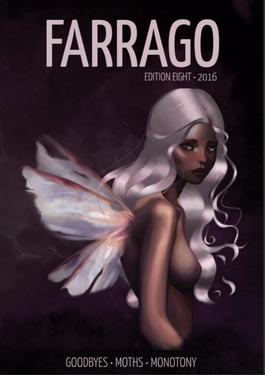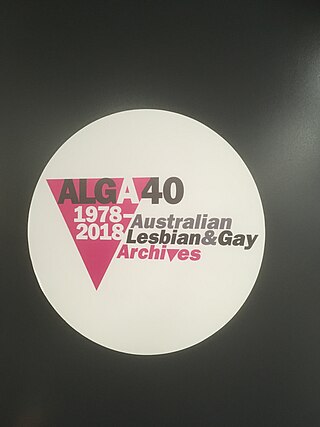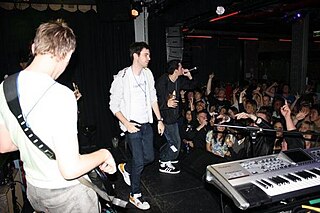
The National Gallery of Victoria, popularly known as the NGV, is an art museum in Melbourne, Victoria, Australia. Founded in 1861, it is Australia's oldest and most visited art museum.

The Australian, with its Saturday edition The Weekend Australian, is a broadsheet newspaper published by News Corp Australia since 14 July 1964. As the only Australian daily newspaper distributed nationally, its readership as of September 2019 of both print and online editions was 2,394,000. Its editorial line has been self-described over time as centre-right.

mX was an Australian free afternoon daily newspaper in the cities of Melbourne, Sydney and Brisbane, owned and produced by News Corp Australia. Targeted at commuters, its main channels of distribution were inner-city railway stations, tram and bus stops, and major CBD intersections. The last edition of mX was published on 12 June 2015.

Elizabeth Street is one of the main streets in the Melbourne central business district, Victoria, Australia, part of the Hoddle Grid laid out in 1837. It is presumed to have been named in honour of governor Richard Bourke's wife.
Inpress was a free weekly tabloid-sized music magazine that was published in Melbourne, and was released in the Geelong and Mornington Peninsula areas of Victoria, Australia. The magazine was published by Street Press Australia on a weekly basis every Wednesday.

Farrago is the student publication for the University of Melbourne in Melbourne, Australia published by the University of Melbourne Student Union. It is the oldest student publication in Australia. It was first published on 3 April 1925.

The Music is an online Australian music magazine. It previously existed as a street press devoted to long-form music journalism and commentary, music news, and artist interviews. In its printed form, it was based in Sydney and distributed throughout Sydney, Wollongong, Newcastle, Canberra and surrounding areas. The magazine changed its name to The Music in 2013, following the merge with two other magazines, Brisbane's Time Off and Melbourne's Inpress, owned by Street Press Australia. In 2020 the print edition was paused.

Nicholas Caruana, also known as Nicky Bomba, is an Australian musician and singer-songwriter. He is the leader of the ARIA Award-winning Melbourne Ska Orchestra, frontman of his band, Bomba, as well as the former drummer and percussionist of John Butler Trio. He has performed in other acts and as a solo artist. His youngest sister, Danielle Caruana,, is married to his former bandmate, John Butler. His older brother, Michael Caruana, is a member of Bomba and of Mama Kin's backing band.

Leigh Hobbs is an Australian artist and author. He is best known in Australia and the United Kingdom for the humorous children's books which he has written and illustrated, although he has produced works across a wide range of mediums. His books principally feature the characters Old Tom, Horrible Harriet, Fiona the Pig, Mr Badger and Mr Chicken, and characters from the 4F for FREAKS books. He was the Australian Children's Laureate for 2016–17.
Issuu, Inc. is a Danish-founded American electronic publishing platform based in Palo Alto, California, United States. Founded in 2006 as a Danish startup, the company moved its headquarters to the United States in 2013.

The Australian Queer Archives (AQuA) is a community-based non-profit organisation committed to the collection, preservation and celebration of material reflecting the lives and experiences of lesbian, gay, bisexual, transgender and intersex LGBTI Australians. It is located in Melbourne. The Archives was established as an initiative of the 4th National Homosexual Conference, Sydney, August 1978, drawing on the previous work of founding President Graham Carbery. Since its establishment the collection has grown to over 200,000 items, constituting the largest and most significant collection of material relating to LGBT Australians and the largest collection of LGBT material in Australia, and the most prominent research centre for gay, lesbian, bisexual, trans and intersex history in Australia.

Luke George Girgis, formerly known by his stage name, Coptic Soldier, is an Australian hip-hop artist, music manager, record label executive, and publisher. He often performed with stage partner, Phatchance and later became his manager.
Limelight is an Australian digital and print magazine focusing on music, arts and culture. It is based in Sydney, New South Wales. Originally published in 1976 by the Australian Broadcasting Corporation (ABC), as ABC Radio 24 Hours, or simply 24 Hours, since March 2018 it has been published independently by Limelight Arts Media, owned by music lovers Robert Veel and Bruce Watson.
Joyce Olga Evans, B.A., Dip. Soc. Stud. was an Australian photographer active as an amateur from the 1950s and professional photographic artist from the 1980s, director of the Church Street Photography Centre in Melbourne (1976–1982), art curator and collector, and tertiary photography lecturer.

Robert Hague, is an Australian artist living and working in Melbourne, Victoria. He is best known for his metal and marble sculpture and his detailed lithographic print work.
Facter, or Fletcher Anderson, is a Melbourne based, Australian multi-disciplinary artist, best known for his colorful creatures rendered in a illustrative style.
Wendy Murray, is a visual artist and arts educator, formerly known as Mini Graff. Under her former persona, Murray worked as an urban street-poster artist between 2003 and 2010, working in and around Sydney's urban fringe. Since 2014, Murray's art expanded into traditional forms of drawing and artist book design, whilst still engaging with social and political issues through poster-making. Murray's use of letraset transfers, accompanied with vibrant colours and fluorescent inks, references the work of studios from the 1960s through to the 1980s, including the community-based Earthworks Poster Collective and Redback Graphix. A 2018 collaboration with The Urban Crew, a 17-person collective of socially engaged geographers, planners, political scientists and sociologists, resulted in the Sydney – We Need to Talk! artist book, addressing issues of development, transport congestion, housing affordability and commercialisation of public space.
TAGG – The Alternative Gig Guide or TAGG was a free fortnightly Australian music street press published from 1979 to 1981 in Melbourne. It was published by Toorak Times, an independent newspaper started in 1972, and later expanded to Sydney.
Music magazines have been published in Australia since the 1950s. They peaked in popularity during the 1970s and '80s, but currently, there are still several national titles, including local editions of Rolling Stone and the classical music-focused Limelight, among others.
Australia has had a long history of street press media, beginning in the 1980s. Most street press have been centred around music and gig guides, but subjects have also included movies, fashion, and food. Each major city in Australia had at least two music street press at some point, and they were at their most popular during the 1990s.











